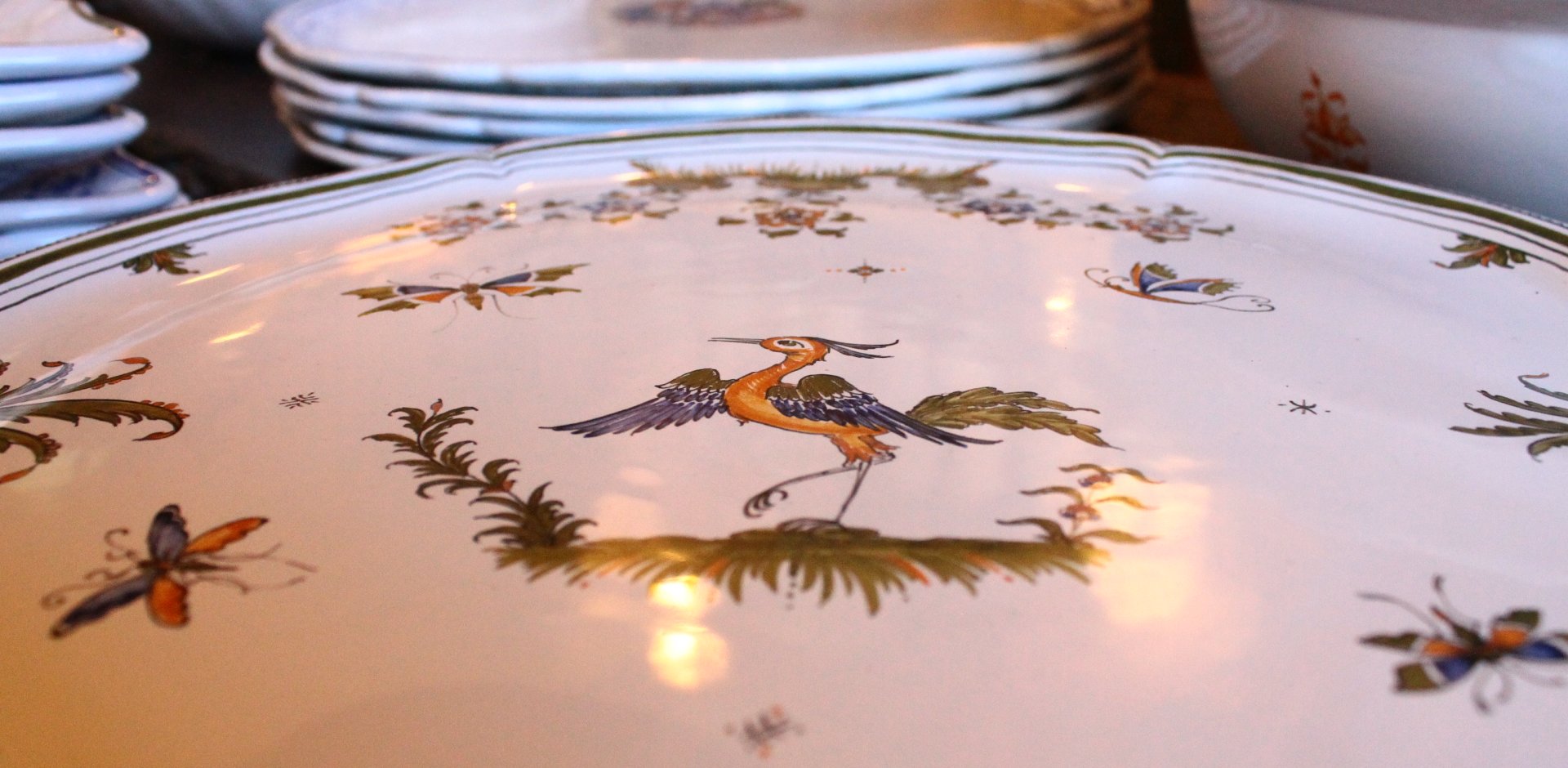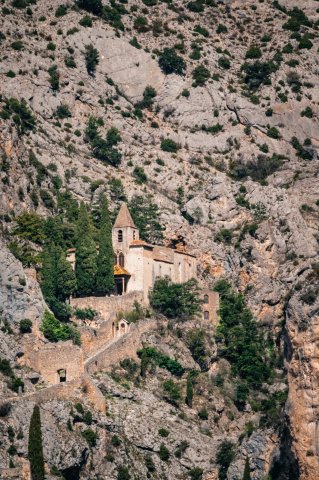History
The art of ceramics has considerably evolved in Moustiers since the Middle Ages. At the time, only objects in glazed clay were produced, in the natural colours of green and brown. The art flourished thanks to Pierre Clérissy, who was initiated by an Italian monk visiting the Monastery of the Communauté de Lérins. He came with the secret of white enamel (tinned ceramics) in 1668. Not long after, Louis XIV had ordered all the gold and silver tableware to be melted to restore the royal treasure and to go to war. It is in this moment that Moustiers’ ceramics will acquire high notoriety all over European courts.
The fashion of China and english ceramics put a stop to two centuries of uninterrupted activity. In 1927, Marcel Provence heats up an oven in the village with the purpose of restoring the image of Moustiers as a great ceramic centre worldwide. Today, there are seven workshops and a museum dedicated to it, they perpetuate and renew this traditional craft for the greatest pleasure of the visitors.
Contact
Rue du Seigneur de la Clue
04360 Moustiers Sainte-Marie
+33(0)4 92 74 61 64
Moustiers Sainte-Marie, ceramic capital
Moustiers-Sainte-Marie is known all over the world for its ceramics with incomparable refinement and decors. They are created from three essential elements : water, earth and wood. The tradition of Moustiers ceramics can be found in the workshops and the galleries but also at the Faïence museum. Beautiful objects from the XVIIth century to nowadays are exhibited here. You can also discover the history of the Moustiers ceramics and the various processing steps here. Numerous galleries and workshops are settled in the heart of the village and all around.
Discover the ceramic Museum






